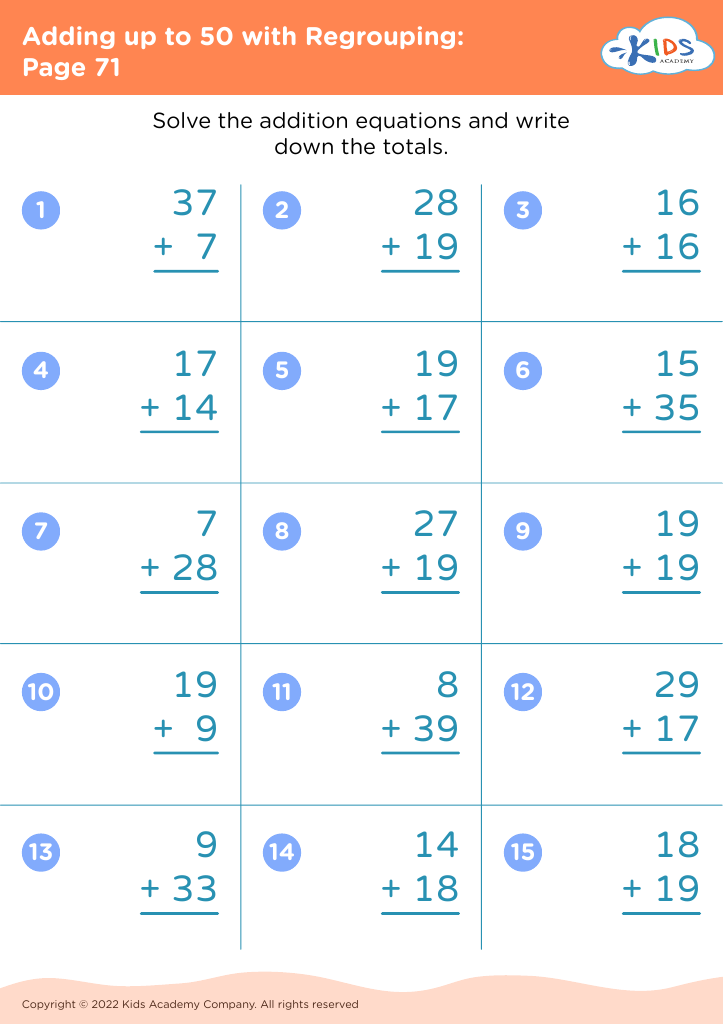Visual discrimination Worksheets for Ages 7-9
10 filtered results
-
From - To
Enhance your child's visual discrimination skills with our specialized worksheets designed for ages 7-9. At Kids Academy, we understand the importance of visual discrimination in reading and learning. Our printables offer engaging and educational activities to help children distinguish and differentiate shapes, letters, and numbers. These worksheets are crafted to strengthen their visual perception and attention to detail, essential for academic success. Ideal for home or classroom use, our resources make learning both fun and effective. Explore our comprehensive collection and support your child in mastering essential skills for their developmental stage. Empower their learning journey today!


Twin Shapes Worksheet


Congruent Shapes Worksheet


Letters X and Q Tracing Worksheet


Name the Shapes Halves or Fourths? Worksheet


What Shape Am I? Worksheet


Twin Shapes Dot-to-Dot Worksheet
Visual discrimination is the ability to distinguish between different shapes, colors, and patterns, and it's crucial for children aged 7-9 for several reasons. Firstly, this skill underpins reading development. Children with strong visual discrimination skills can more easily recognize and differentiate between letters and words, which is essential for reading fluency and comprehension. They can distinguish between similar letters (like "b" and "d" or "p" and "q") and between different words that may look somewhat alike.
Secondly, visual discrimination plays a pivotal role in math. It helps children recognize numbers, understand geometric shapes, and follow visual patterns, which are fundamental in early math learning. Efficient visual discrimination skills allow kids to quickly and accurately process visual information, leading to better problem-solving and logical reasoning abilities.
Finally, visual discrimination affects daily activities and overall confidence. For instance, being able to identify differences in visual cues helps children follow instructions, understand and create art projects, and engage more fully in play and social interactions. Poor visual discrimination skills might lead to frustration, lower academic achievements, and reduced self-esteem. Therefore, parents and teachers should support activities and exercises that enhance visual discrimination, ensuring a strong foundation for future learning and development.


 Assign to My Students
Assign to My Students







%20(1).jpg)











